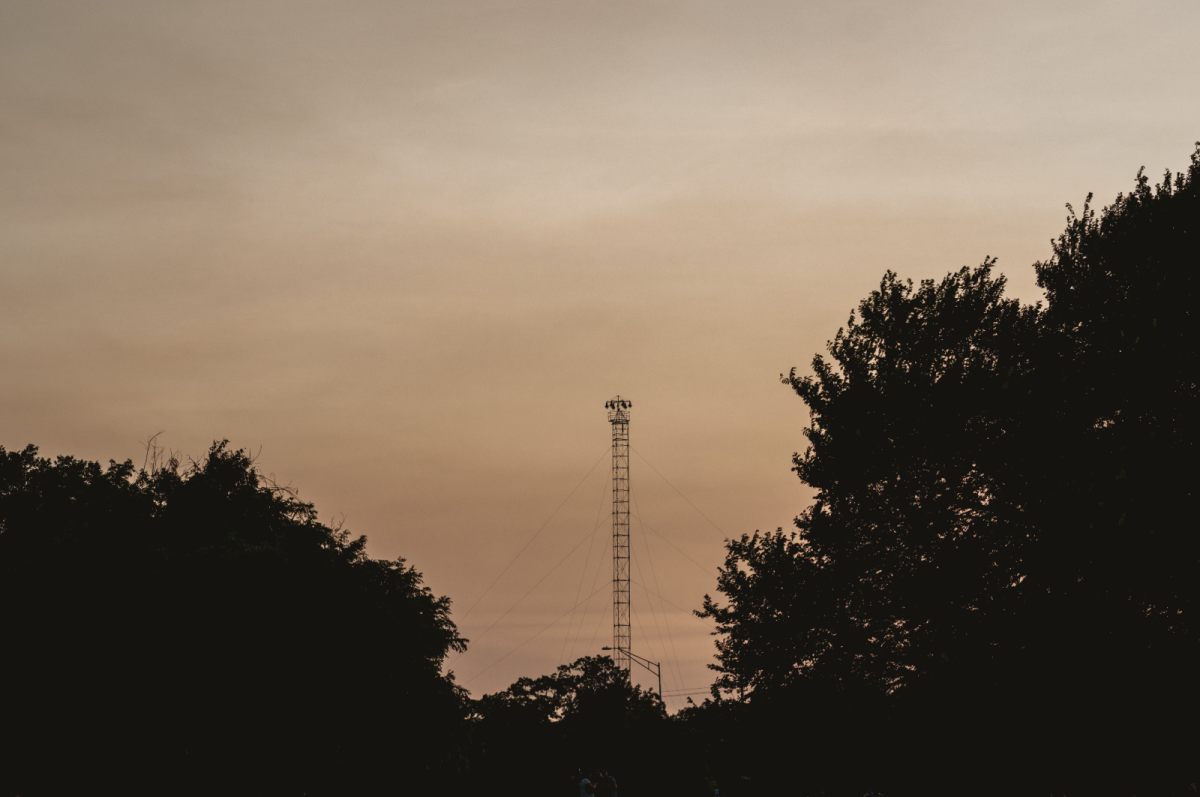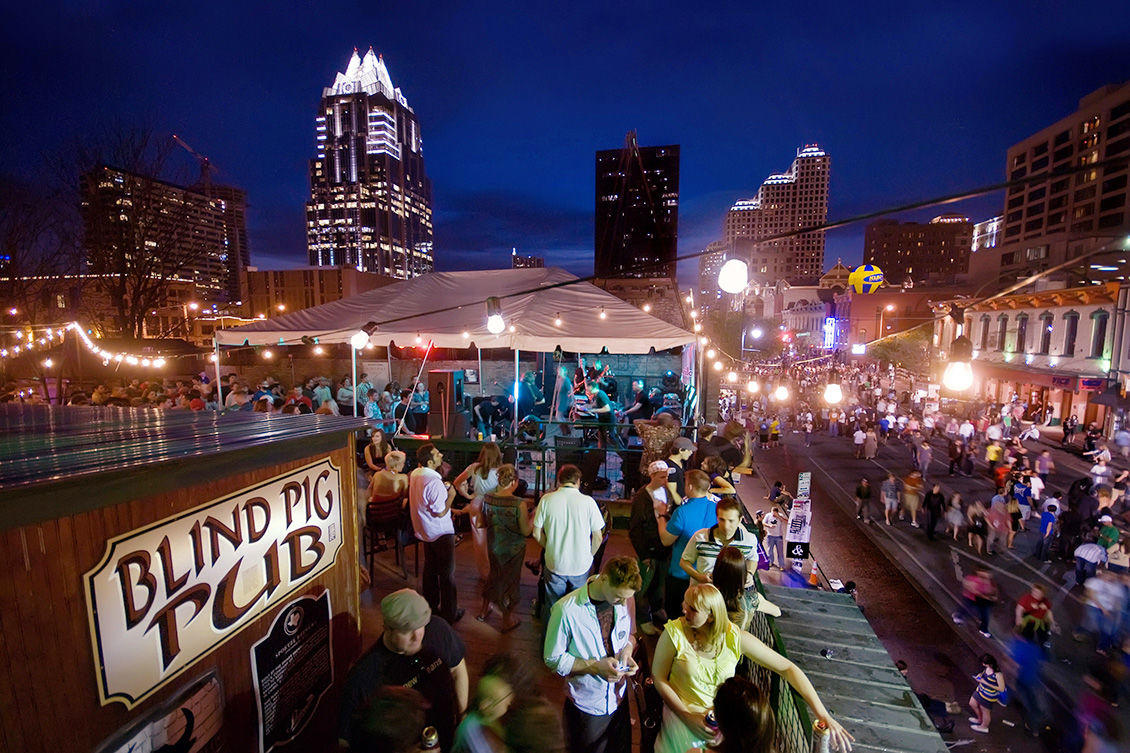Started as a small village in 1837, Austin has collected its fair share of local history, mythology, and folklore throughout the years.
From nineteenth-century serial killers to disorderly celebrities, our city offers some of the most bizarre urban legends around. Austin is almost 200 years old—so of course, some crazy stuff has gone down. Have you ever wondered why Frost Bank resembles the face of an owl? Or why Austin's skyline turns purple during sundown? If so, you've come to the right place. Here are ten of the wildest urban legends Austin has come to acquire. Some are verifiably true, others... well, you'll have to take them as they are.
________________________________
You'd think being close to a town known for its hippie culture wouldn't bat an eye at a man with extra hair, but up in Round Rock, they couldn't help but fear one furry fiend. The legend goes that a child in the 1800s was separated from his caravan and fell into a creek during a frightful storm. Managing to escape, he sought shelter but was never able to rejoin his family. Growing into a lonesome hermit living in the woods. Unable to be taught the proper ways of civil society, he would terrorize anyone who dared to enter Brushy Creek. Stagecoaches would steer clear from him as best he could until he met his match as speeding horses trampled him into the very dirt he protected. Still a fierce defender of his woods, his spirit is said to haunt Hairy Man Road to this day. Even as civilization creeps in, this beast of a man still roams the ever-growing neighborhood.
________________________________

Photo Credit: Roger Ho
The Moontowers
Let's clear something up right off the bat: Austin's famous Moontowers were not erected as a deterrent against the so-called "Servant Girl Annihilator." In fact, these illuminating spires were built some ten years after that still-unidentified madman's assault plagued the town with a radiantly shared terror. Rather, the Moontowers were erected out of more benign business; a Capital city modernizing itself with what was at that time a novel way to provide street-lighting during the evening.
Originally purchased by the city of Austin from Detroit, the Moontowers pretty quickly presented some issues of their own. Pranksters and daredevils took to climbing them in short order, and the less-than-surefooted incurred serious injuries from their subsequent tumbles down. There were also bizarre worries voiced by citizens that the brightness of the towers could cause an overgrowth in local crops. The former was more or less resolved by placing cautionary signs in close proximity, and the latter issue unsurprisingly turned out to be misplaced.
The Moontowers did their job, and they did them well. At least, until the ever-churning machinations of technology rendered them outdated shortly thereafter. Fortunately, the city of Austin was forward-thinking in its appreciation for the past enough to keep some fifteen of the original 31 towers around. Other cities which had previously used the towers, such as Detroit and New Orleans, tore them down years ago.
Photo Credit: Austin.com
On the surface, St. Edward's looks like any other private liberal arts university: Gothic spires, sprawling courtyards, iron gates. But something lurks underneath the ornate architecture, something sinister. According to campus legend, a malicious ghost haunts the Mary Moody Northern Theatre, tormenting students by moving furniture and screaming. Though accounts vary, the origin of the apparition stems from a suicide that took place during the 1980s. During an exceptionally cold winter, a young Theater student, depressed from a recent breakup, snuck into Mary Moody and hung himself from the light grid hanging above the stage. Now he haunts the theater, scaring unaware students during the early hours of the morning. Some have even spotted nooses hanging from the lighting grid; others have heard the ghost screaming throughout the night, furious with the rage of unrequited love.
Photo Credit: Pink Palace
Janis Joplin at The Pink Palace
Situated on a quiet street in West Campus, The Pink Palace is a three-story Victorian home coated in thick layers of light pink paint. Built over 100 years ago, the Palace has provided shelter for an incalculable number of bohemians, mavericks, and weirdos. During the early 1960s, the house happened to admit a burgeoning American icon: Janis Joplin. Rumors and local legends claim Joplin spent much of her time in Austin carousing through the Palace's sprawling rooms and winding halls, penning some of her best songs in a drunken stupor. Though Joplin's presence is a compelling and mysterious tale, The Pink Palace stands alone as one of Austin's most strange and storied establishments. Filled with secret passageways, creaking halls, and sui generis tenants, the pink Victorian on West Campus is a living testament to local mythology.
Photo Credit: The Driskill Facebook
604 Brazos St
Originally built in 1886, The Driskill is one of the oldest buildings in Austin. When a building has been around for 129 years, you can safely bet that some interesting things have gone on there. The original owner, Jesse Driskill, lost ownership of the hotel in a whiskey-fueled card game, and the place is widely reported to be haunted. If you're really looking for a scare, stay in the room of the "Suicide Brides" and decide for yourself if these tall tales hold true.
Photo Credit: Roger Ho
Moloch, The Illuminati, and Frost Bank
When the construction of Frost Bank was completed in 2003, many considered the building Austin's finest skyscraper. But some Austinites discovered something disconcerting embedded in Frost Bank's architecture: the face of an owl, a standard symbol of the Illuminati. Though the symbology of an owl varies throughout the Internet, many claim the Illuminati uses the nocturnal bird to publicly display allegiance to Moloch, the terrifying God from the Old Testament that feeds upon children. Now, we know what you're thinking: How in the hell could Frost Bank symbolize a biblical monster that eats little kids? Well, to provide an adequate explanation, we'd have to sit down for hours, review Masonic symbols, reexamine biblical tales, check the charts, etc. And quite frankly, we don't have the time. But if you're an armchair muckraker looking to blow the lid on this whole thing, just google "Moloch Frost Bank Illuminati" and jump into the rabbit hole. Don't say we didn't warn you.

Photo Credit: Dave Mixner
The Case of the Stolen Kidneys
During the early aughts, an unidentified University of Texas student endured a hangover from hell that sounds more like a scene from an Eli Roth movie than a story of reality. After finishing a grueling week of final exams, the student decided to let loose and hit the bars, drinking ungodly amounts of cheap vodka sodas until eventually passing out on a buddy's couch. As the morning sun began to rise, the student awoke to find himself naked in a bathtub filled with ice, numb from some sort of medical anesthesia. On his chest, an eerie caveat scribbled in lipstick: "CALL 911 OR YOU WILL DIE." Disoriented and feeling abnormally sick, the student phoned 911 and asked for assistance. As the medical team arrived, the student learned the gravity of his hangover: His kidneys had been surgically removed by thieves looking to sell the organs on the black market. Believe it or not, this Austin legend lives on as one of the city's most disquieting tales.
Photo Credit: Huffington Post
Matthew McConaughey's Naked Bongo Night
This one falls into the "This definitely, actually happened" category. Celebrated actor and Austin resident Matthew McConaughey is mostly known for his appearances on the silver screen. But the True Detective star has a hidden talent unknown to many: playing the bongos. In 1999, police responded to a noise disturbance in an upscale neighborhood and were surprised to find McConaughey in his front yard, furiously pounding on a pair of big ass bongos in his birthday suit. Officers inspected the actor for signs of inebriation and quickly decided to put an end to McConaughey's jam session. The actor spent the night behind bars and paid a small fine but ultimately provided Austin with one of its best urban legends. Since then, McConaughey has apparently quieted down but rumors still persist. If you open your windows at just the right time on a Friday night, you will hear the faint echo of pounding bongos and a slow southern drawl uttering a familiar phrase: "Alright, alright, alright."

Photo Credit: Reading With Rhythm
The Treaty Oak Poisoning
Once used by the Comanche and Tonkawa tribes as a place of meeting, Austin's Treaty Oak has come to symbolize compromise and unity. Clocking in at a whopping 600 years on the age meter, Treaty Oak is undoubtedly one of our city's oldest treasures. But in 1989, the sacred oak confronted its mortality when Paul Cullen, a mentally-unstable feed store employee, began ritualistically poisoning the tree, pouring herbicide over its trunk and leaves. After being apprehended by authorities, Culled offered an enigmatic reason for the poisoning: "to entrap its spiritual energy and win the love of a woman." Some Austinites just passed Cullen off as another crazy; an aging hippie that took too much of the wrong stuff. But other citizens dug deeper into the man's history, unearthing a bizarre love triangle involving crazed psychiatrists, jilted lovers, and adultery. The motivation behind Cullen's nefarious act remains disputed. Today, Cullen exists as one of Austin's most reviled villains but Treaty Oak, after years of rescue efforts, stands tall and proud.

Photo Credit: Trey Ratcliff
Lithium Clouds?
Have you ever noticed a purple glow along Austin's skyline during the sunset? Well, some Austin natives consider the spectacle to be much more complex than just another pretty horizon. Many armchair meteorologists claim that a billowing cloud of lithium surrounds the city, blanketing Austin in a soothing layer of purple that causes euphoria and happiness. These clouds, believers argue, are the root cause for Austin's general bonhomie, its "weirdness," and its thriving cultural environment. Venerated short story writer O. Henry once described Austin as a city "cloaked in a violet crown" in his classic detective story "Tictocq: The Great French Detective, In Austin." If the perceptive mind behind The Gift of the Magi took notice of the purple clouds, then maybe there is validity to the lithium theory. But lithium or no, there's always magic in an Austin sunset.
Photo Credit: The Clay Pit
Beloved Indian restaurant The Clay Pit resides in the historical Bertram Building, one of Austin's oldest establishments. Built in 1853, the Bertram building was initially used as a trading post but was converted into a dry goods storefront in 1872 by budding capitalist O.R. Bertram. According to local legend, Bertram's five-year-old son died from Typhoid fever in his bedroom but his spirit remained locked within those four walls. Guests of The Clay Pit report sounds of ghostly moaning coming from a mysterious upstairs room that seems to have no physical source. In addition to the spooky bellows, some claim to hear loud sounds of partying coming from that same upstairs room during late night hours when the restaurant is closed. Whether you believe in ghosts or not, the Bertram Building holds some of Austin's best-kept secrets.
Photo Credit: Burnt Orange Nation
The Origin of Bevo's Name
Bevo, U.T.'s mascot, is a lovable longhorn cherished by many Austinites and university students. But how did "Bevo" get its name? Well, that answer depends on whom you ask. But a common tale of the longhorn's nomenclature involves one of U.T.'s oldest rivals: Texas A&M. After a 13-0 Aggie victory at the 1916 Thanksgiving Day showdown, a group of Aggies branded "13-0" into the hide of the Longhorns' first mascot. In order to avoid embarrassment, the Longhorns modified the brand to read "BEVO," turning the 13 into a "B," the dash into an "E," and adding a "V" before the final "0." Of course, University of Texas students have a different account regarding the origin of their mascot's name but the tale resides as some of the best campus folklore out there. And, y'know, sometimes things are better left unknown.
________________________________
austin circa 2011, photo credit: Austin history center facebook
Affordable Austin
Long before crumbling shacks sold for millions of dollars, Austin was said to once be something known as "affordable". Many well-rooted locals who have lived here for a full two years might not have heard about this, but ask any long-time resident and they'll spin you quite the tale. They speak of a smaller town with cheap rent, parking a plenty, ACL lineups worthy of celebration, some kind of headquarters for armadillos, a street wizard known by the name of Leslie, and even a time when you didn't need to take a toll road to get home in under an hour. Scientists can't find evidence of any of this, but if you dare, mention how Austin has changed and a worn-out tech bro from the early 2000s will speak of a golden age the likes you've never heard before.
Know of a local legend, myth, or tall tale that you think we should be talking about? Let us know.